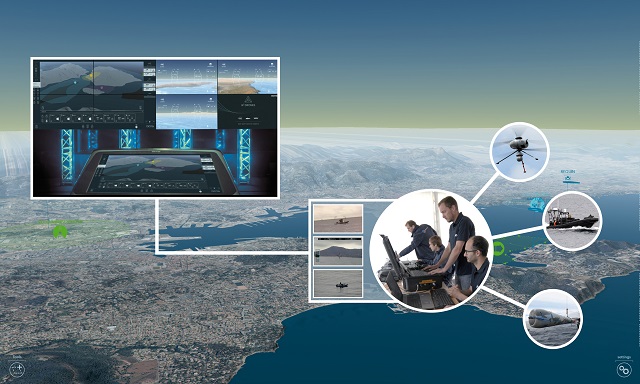|
|
|||
|
DCNS video on I4 Drones
|
|||
|
I4® Drones is the naval-drone mission system designed and developed by DCNS for the end-to-end management of drone missions, and covering three key phases: mission preparation, deployment and data exploitation, recovery and mission restitution. The I4® Drones system allows the supervision of naval drone operations in the three environments: air, surface and underwater. This system can be installed on a surface vessel or submarine, and can also be deployed in a land-based command centre. Thanks to the I4® Drones system, the management of drone missions is facilitated in the context of interarmed forces and inter-ally coalitions ensuring greater effectiveness and increased interoperability between vessels and drones.
D19 is DCNS's first autonomous underwater military drone designed to equip surface vessels and submarines. Capitalising on its know-how in the area of torpedoes and mobile underwater targets, DCNS designed the D19 for performing several missions in support of naval actions. REMORINA is a surface drone developed by Sirehna. Endowed with decision-making autonomy and advanced obstacle-avoidance functions, it can approach an object either autonomously or by remote control and interact with a threat. Equipped with multiple sensors, it transmits its data to the land-based centre in real time, which thus possesses enhanced tactical information and can actuate its non-lethal weapons or conduct manoeuvres to deny access to a zone. IT180 is a versatile rotary-wing mini-UAV developed by the ECA Group. This drone is easy to use, even under difficult weather conditions. Its flexible battery system provides an autonomy of two hours, an operating range in excess of 30 nautical miles and a payload of up to 5 kg (IR, video, PIR). This UAV can be used to monitor and secure the area around a vessel, detect floating drifting mines in front of a transiting expeditionary naval force or be linked by fibre optic to its "mother vessel" as a trans-horizon radio relay for the UAVs and naval surface drones intervening in the mine-threat area. |
|||
DCNS successfully achieves a European 1st: the coordinated deployment of 3 types of drone
- Posted On











